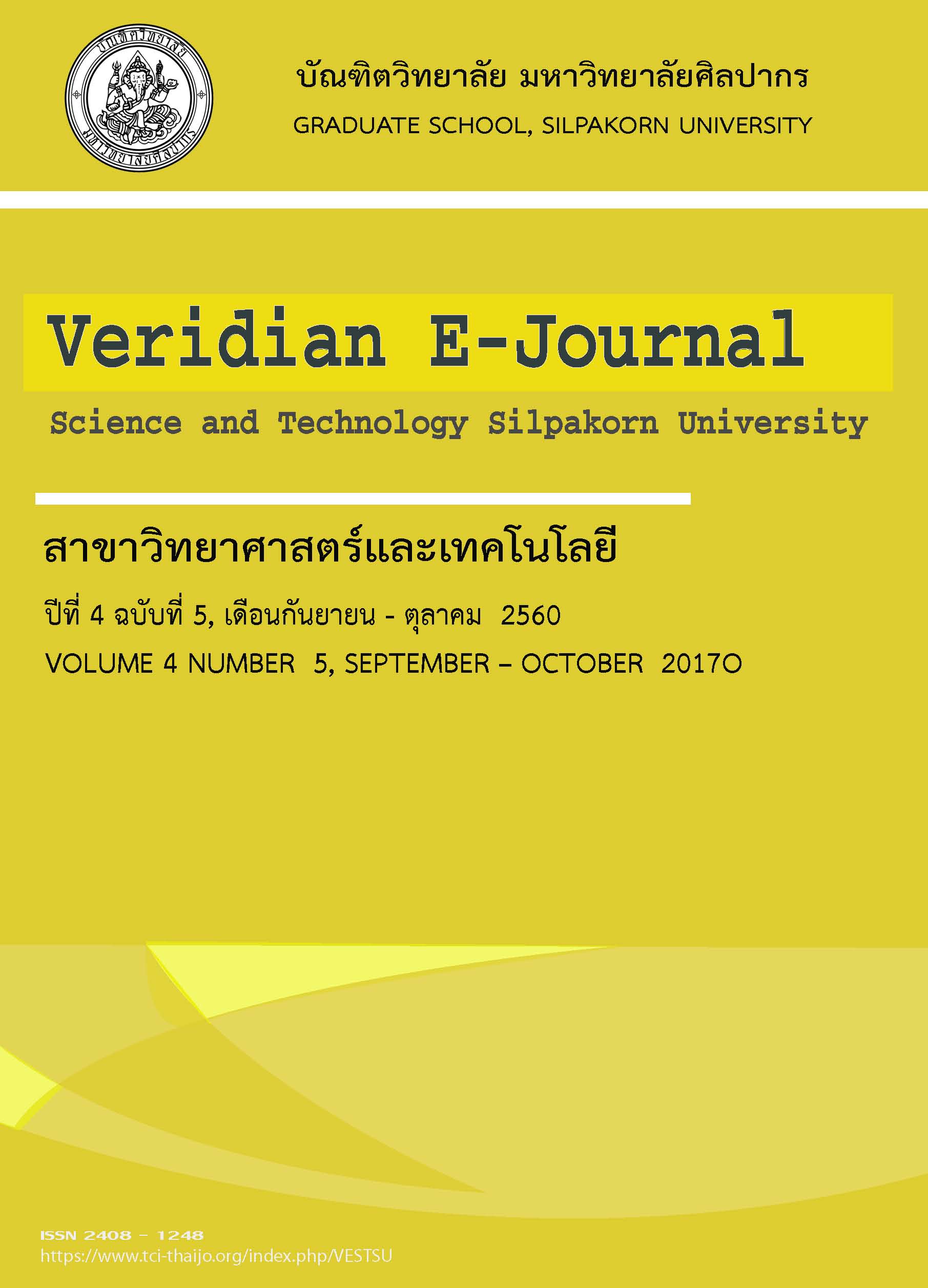การศึกษาเปรียบเทียบการใช้พลังงานไฟฟ้าในมหาวิทยาลัยและสภาวะสบายของผู้ใช้อาคารก่อนและหลังการเปลี่ยนเวลาการเปิด-ปิดภาคการศึกษาในประเทศไทย ให้สอดคล้องกับกลุ่มประเทศอาเซียน (A comparative study of energy consumption and occupant thermal comfort in higher edu) (A comparative study of energy consumption and occupant thermal comfort in higher education buildings in Thailand after changing the term dates to coincide with other ASEAN countries)
Main Article Content
Abstract
งานวิจัยนี้มีวัตถุประสงค์เพื่อเปรียบเทียบการใช้พลังงานไฟฟ้าในมหาวิทยาลัยในประเทศไทย ก่อนและหลังการเปลี่ยนเวลาการเปิด-ปิดภาคการศึกษาแบบอาเซียน และผลกระทบด้านสภาวะสบายของผู้ใช้อาคารเพื่อเสนอแนะแนวทางการลดการใช้พลังงานไฟฟ้าที่อาจเพิ่มขึ้น โดยคณะผู้วิจัยได้เลือกอาคารเรียนรวมของมหาวิทยาลัยศิลปากร จังหวัดนครปฐม เป็นกรณีศึกษา 3 อาคาร ผลการจำลองปริมาณการใช้ไฟฟ้าของทั้ง 3 อาคาร พบว่าภายหลังการเปลี่ยนแปลง การใช้ไฟฟ้ามีปริมาณสูงขึ้น 2,234-4,063 กิโลวัตต์-ชั่วโมงต่อปี หรือคิดเป็น 0.58-1.04% ต่อปี ของปริมาณการใช้ไฟฟ้าก่อนการเปลี่ยนแปลง ส่วนผลการประเมินสภาวะสบายของผู้ใช้อาคารในพื้นที่ไม่ปรับอากาศเฉพาะในช่วงภาคการศึกษาต้นและปลาย ซึ่งคำนวณโดยใช้ Adaptive comfort model จาก ASHRAE Standard 55-2013 พบว่า ภายหลังการเปลี่ยนแปลง จำนวนชั่วโมงทำการที่มีอุณหภูมิอากาศภายนอกอยู่ในขอบเขตสภาวะสบาย มีแนวโน้มลดลงจาก 44% เหลือ 36% ในขณะที่มีจำนวนชั่วโมงที่มีอุณหภูมิสูงเกินไปและยากแก่การปรับตัว เพิ่มขึ้นจาก 12% เป็น 27% ของจำนวนชั่วโมงทำการทั้งหมด ซึ่งหากมีการปรับปรุงประสิทธิภาพของกรอบอาคารเดิมในส่วนที่ยังไม่ผ่านเกณฑ์ที่กฎหมายกำหนด ด้วยการเพิ่มฉนวนให้กับกรอบอาคาร จะสามารถลดการใช้ไฟฟ้าลงได้ 1,389-4,725 กิโลวัตต์-ชั่วโมง/ปี ส่วนการจัดการพลังงานด้วยการเลี่ยงหรือลดเวลาการใช้เครื่องปรับอากาศในช่วงเดือนที่มีอากาศร้อนหรือช่วงบ่ายจะช่วยลดจำนวนองศาชั่วโมงการทำความเย็น (Cooling degree hours) ลงได้ 2% และ 24%
This research aimed to compare electricity consumption in higher education buildings in Thailand, before and after changing the academic-term dates to coincide with other ASEAN countries. Additional objective was to indicate the impact of the change on occupant thermal comfort. The findings would be used for proposing approaches to reduce energy consumption that may result from the change. Three buildings, located in Silpakorn University, Sanamchandra campus, were selected as the case studies of this research. The building energy simulation results showed that after the change the electrical usage in all three buildings had increased by 2,234-4,063 kWh per year or 0.58-1.04%. On the user side, Adaptive comfort model from ASHRAE Standard 55-2013 was adopted to evaluate the occupant thermal comfort in non-air-conditioned areas. The results suggested that after the change the number of working hours in term 1 and 2 that fall within the comfort zone decreased from 44% to 36%. Considering uncomfortable hours, the percentage of working hours when the outdoor temperatures became unacceptably hot increased from 12% to 27% of the total working hours. This study suggested that by improving the thermal insulation of existing building envelopes to comply with the OTTV and RTTV regulations, it could reduce the energy usage by 1,389-4,725 kWh per year. In addition, by managing time of use, for example, to avoid or reduce the usage of air conditioning during the months with a high temperature or in the afternoon hours, the cooling degree hours could be reduced by 2% and 24%.

